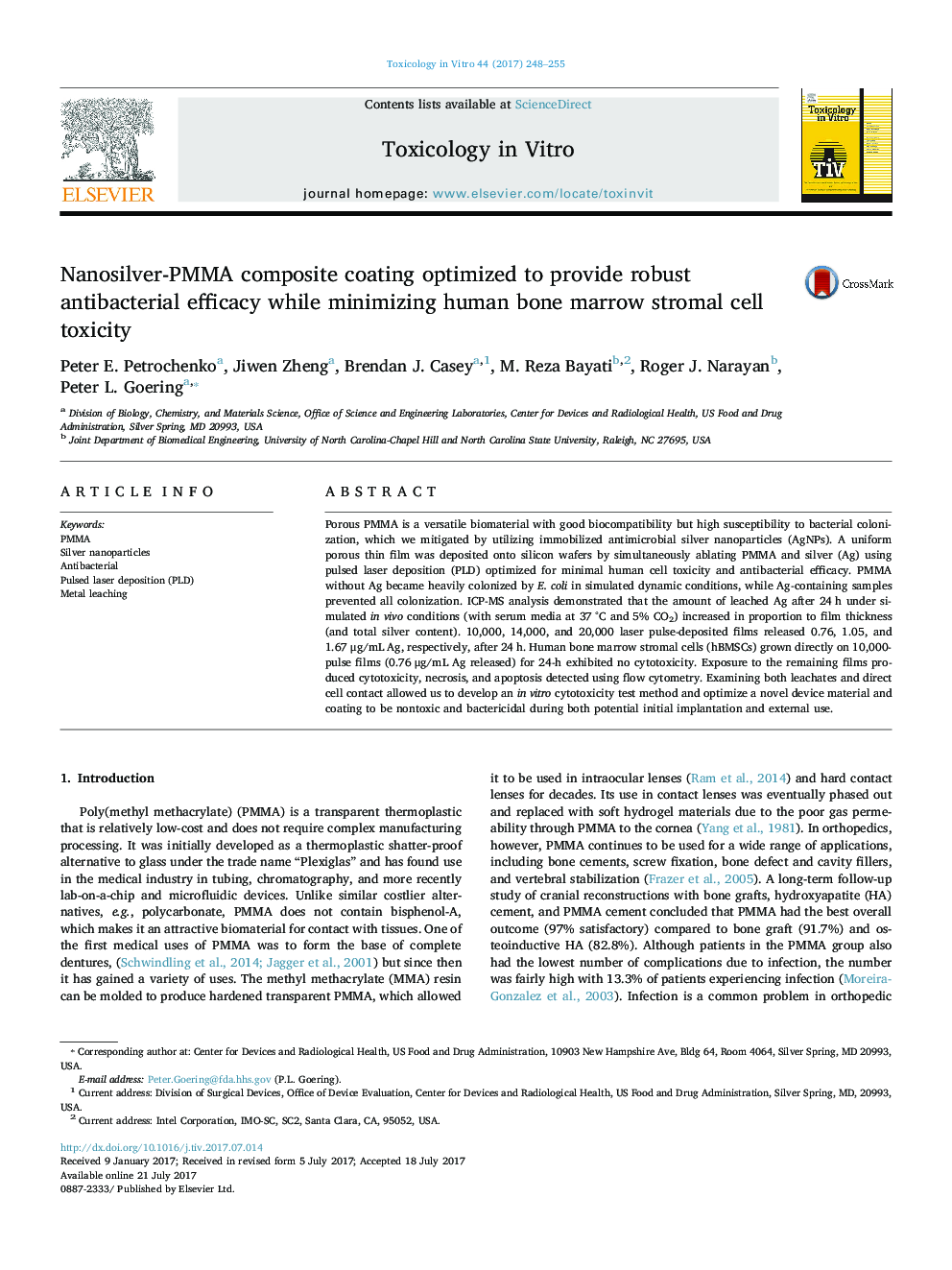| Article ID | Journal | Published Year | Pages | File Type |
|---|---|---|---|---|
| 5562552 | Toxicology in Vitro | 2017 | 8 Pages |
â¢Polymers embedded with nanosilver have potential toxicity from silver ion leaching.â¢Silver leaching caused apoptosis and necrosis in human cells.â¢A PMMA-nanosilver coating was optimized to kill bacteria while being non-cytotoxic to human cells.â¢Application of this coating by laser deposition may benefit implanted and external-use devices.
Porous PMMA is a versatile biomaterial with good biocompatibility but high susceptibility to bacterial colonization, which we mitigated by utilizing immobilized antimicrobial silver nanoparticles (AgNPs). A uniform porous thin film was deposited onto silicon wafers by simultaneously ablating PMMA and silver (Ag) using pulsed laser deposition (PLD) optimized for minimal human cell toxicity and antibacterial efficacy. PMMA without Ag became heavily colonized by E. coli in simulated dynamic conditions, while Ag-containing samples prevented all colonization. ICP-MS analysis demonstrated that the amount of leached Ag after 24 h under simulated in vivo conditions (with serum media at 37 °C and 5% CO2) increased in proportion to film thickness (and total silver content). 10,000, 14,000, and 20,000 laser pulse-deposited films released 0.76, 1.05, and 1.67 μg/mL Ag, respectively, after 24 h. Human bone marrow stromal cells (hBMSCs) grown directly on 10,000-pulse films (0.76 μg/mL Ag released) for 24-h exhibited no cytotoxicity. Exposure to the remaining films produced cytotoxicity, necrosis, and apoptosis detected using flow cytometry. Examining both leachates and direct cell contact allowed us to develop an in vitro cytotoxicity test method and optimize a novel device material and coating to be nontoxic and bactericidal during both potential initial implantation and external use.
Graphical abstractDownload high-res image (211KB)Download full-size image
